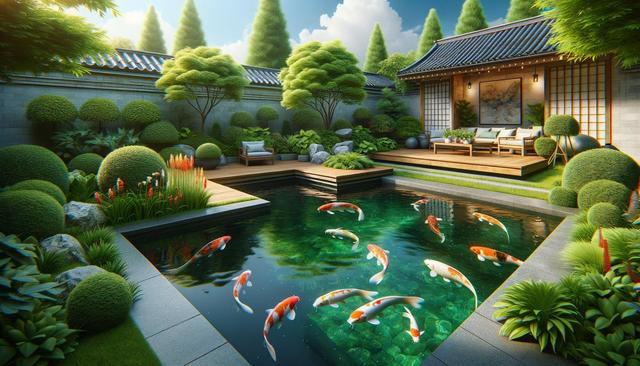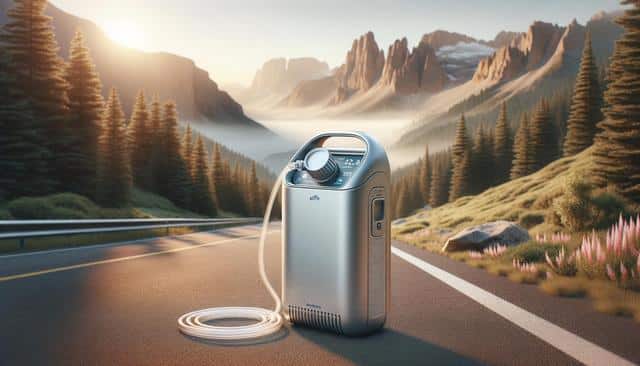
Create a Serene Backyard Retreat with a Koi Pond
Planning Your Koi Pond: Location, Size, and Design
Before you dig the first inch of soil, careful planning is essential to ensure your koi pond supports both the fish and the surrounding ecosystem. Start by selecting a location that gets partial sunlight. While koi enjoy some sun, too much direct exposure can lead to overheating and excessive algae growth. Avoid areas under trees to reduce debris and leaf fall. The size of your pond depends on the number of koi you plan to keep. A good rule of thumb is at least 1,000 gallons of water for a small group of koi, with a depth of at least 3 feet to protect them from predators and temperature swings.
In terms of design, opt for a natural shape with gentle curves that mimic natural ponds. A balance of deep and shallow areas can create habitat diversity for koi and aquatic plants. Incorporate features such as rock edging, plant shelves, and a waterfall or stream for aeration and visual appeal. Sketch your pond layout beforehand to plan for filtration systems, electrical needs, and water access. Planning ahead helps reduce costly modifications later.
Constructing the Pond: Materials and Equipment
With your design finalized, it’s time to gather materials and begin construction. The basic materials for a koi pond include a pond liner, underlayment, pump, filter system, and skimmer. For the liner, EPDM rubber is a durable and flexible choice, providing long-term protection against leaks. Place an underlayment beneath the liner to prevent punctures from rocks or roots.
Once the pond is excavated, lay the liner and secure it with rocks or edging. Install a pump and filter system suitable for your pond’s volume. These systems are crucial for keeping water clean and oxygenated. A skimmer helps remove floating debris before it sinks and decays, maintaining water clarity. Consider adding UV clarifiers if green water becomes a recurring issue.
Key equipment to include:
- Pond pump sized for your pond’s volume
- Biological and mechanical filtration system
- UV clarifier (optional but helpful)
- Aeration system or waterfall for oxygenation
- Flexible tubing and fittings
Introducing Koi and Aquatic Plants
Once your pond is filled and the filtration system has cycled for a few weeks, it’s time to introduce koi fish and aquatic plants. Start with a few koi at first and gradually increase the number as the pond ecosystem matures. Quarantine new fish before adding them to prevent diseases from spreading. Choose koi from reputable sources to ensure healthy, vibrant specimens that adapt well to pond life.
Plants not only enhance the beauty of your pond but also play a vital role in maintaining water quality. Oxygenating plants like anacharis help balance the ecosystem, while floating plants like water lilies provide shade and reduce algae growth. Marginal plants such as irises and cattails offer natural filtration and shelter for koi.
When introducing koi, follow these steps:
- Float the transport bag in the pond for 15–20 minutes to equalize temperature
- Gradually mix pond water into the bag to acclimate the fish
- Gently release koi into the pond without adding bag water
Maintaining Water Quality and Pond Health
Consistent maintenance is key to a healthy koi pond. Monitor water quality parameters such as ammonia, nitrite, nitrate, pH, and temperature regularly using a pond test kit. Perform partial water changes (about 10–20% weekly) to dilute waste buildup and replenish minerals. Clean filters and skimmers as needed, but avoid over-cleaning, which can disrupt beneficial bacteria colonies.
Algae control is another important aspect of pond maintenance. While some algae are natural, excessive growth can harm koi and plants. Maintain a balance of fish, plants, and filtration. Avoid overfeeding koi, as uneaten food can decay and fuel algae blooms. In warmer months, add barley straw or algaecides labeled safe for koi to help manage algae growth.
Tips for healthy pond maintenance:
- Test water weekly and keep a log of results
- Use beneficial bacteria products to support biological filtration
- Remove dead leaves and debris regularly
- Observe koi behavior for signs of stress or illness
Seasonal Care and Long-Term Upkeep
Your koi pond will need different care throughout the year. In spring, inspect equipment and clean the pond before restarting regular feedings. Summer is the growing season—monitor oxygen levels and watch for signs of heat stress. Fall is the time to prepare for winter by reducing feeding and installing netting to catch falling leaves.
In colder climates, koi go dormant during winter. If your pond freezes, use a pond heater or de-icer to keep a hole in the ice for gas exchange. Stop feeding once water temperatures consistently drop below 50°F (10°C), as koi digestion slows significantly. Regularly inspect equipment and water quality, even during the off-season, to prevent issues from developing unnoticed.
Long-term upkeep includes:
- Replacing UV bulbs annually if used
- Inspecting and servicing pumps and filters
- Resealing or adjusting liners as needed
- Pruning plants and removing invasive species
Conclusion: Embrace the Joy of Koi Pond Ownership
Building and maintaining a koi pond can be a rewarding way to enhance your outdoor space while connecting with nature. From the initial planning and construction to daily care and seasonal adjustments, each step contributes to a vibrant, healthy aquatic environment. With regular attention and a balanced ecosystem, your koi pond can provide years of relaxation, visual interest, and peaceful enjoyment for your entire family. Whether you’re new to ponds or expanding an existing garden, creating a koi pond is an investment in beauty and serenity just outside your door.


